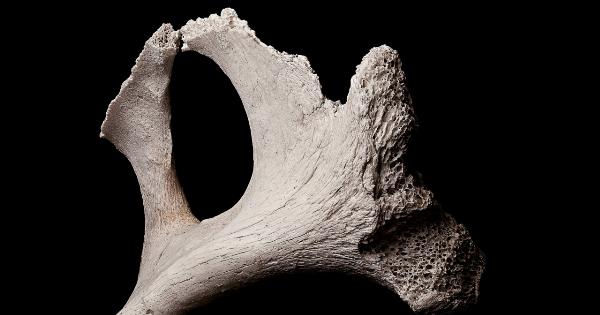Osteoporosis is a silent disease that affects millions of people worldwide, particularly postmenopausal women and older adults. It is characterized by weakened bones, making them fragile and more susceptible to fractures.
Osteoporotic fractures are a significant public health concern, causing pain, disability, and even death. In this article, we delve into the alarming rate of osteoporotic fractures and explore the causes, risk factors, prevention, and treatment options available.
The Impact of Osteoporotic Fractures
Osteoporotic fractures result in a substantial burden on individuals and healthcare systems. Fractures most commonly occur in the hip, spine, and wrist, leading to pain, immobility, and a decreased quality of life.
Additionally, complications from fractures, such as deep vein thrombosis and pneumonia, can be life-threatening.
The Rising Trend of Osteoporotic Fractures
The incidence of osteoporotic fractures is on the rise globally, primarily due to the aging population. As life expectancy increases, so does the risk of developing osteoporosis and experiencing fractures.
Furthermore, changes in lifestyle and dietary habits contribute to the growing prevalence of this condition.
Causes and Risk Factors of Osteoporotic Fractures
Osteoporotic fractures occur when bone density decreases significantly, leading to weak and brittle bones. Several factors contribute to the development of osteoporosis, including:.
- Age and gender
- Hormonal changes, especially in women after menopause
- Low calcium and vitamin D intake
- Inactive lifestyle and lack of exercise
- Smoking and excessive alcohol consumption
- Family history of osteoporosis
- Certain medical conditions and medications
Prevention and Management of Osteoporotic Fractures
Prevention is key to reducing the incidence of osteoporotic fractures.
Lifestyle modifications, including a balanced diet rich in calcium and vitamin D, regular weight-bearing exercises, and avoidance of smoking and excessive alcohol consumption, can help maintain bone health. Additionally, early diagnosis and treatment of osteoporosis with medications such as bisphosphonates and hormone replacement therapy can help improve bone density and reduce the risk of fractures.
Screening and Diagnostic Methods
Several screening tools and diagnostic methods are available to assess bone health and identify individuals at risk of osteoporotic fractures. Dual-energy X-ray absorptiometry (DXA) is the gold standard for measuring bone mineral density.
It helps clinicians determine the severity of bone loss and make appropriate treatment decisions. Other diagnostic tools, such as biochemical markers and quantitative ultrasound, may assist in evaluating bone health as well.
Living with Osteoporotic Fractures
Living with osteoporotic fractures can be challenging, both physically and psychologically. Rehabilitation programs, including physical therapy, can help individuals regain mobility and strength.
The use of assistive devices and modifications in the home environment can also prevent falls and minimize the risk of future fractures. Additionally, support groups and counseling services can offer emotional support and guidance to individuals and their families during the recovery process.
The Importance of Public Awareness and Education
Creating awareness about osteoporotic fractures is crucial in improving prevention, diagnosis, and management of this condition.
Public health campaigns and educational programs can educate individuals on the importance of bone health, the risk factors for osteoporosis, and the significance of early intervention. By raising awareness, we can empower individuals to take control of their bone health and reduce the burden of osteoporotic fractures on the population.
Advancements in Research and Treatment
Ongoing research efforts are focused on identifying new treatments and interventions for osteoporosis. Scientists are exploring novel drug targets and therapeutic approaches to enhance bone formation and inhibit bone resorption.
Additionally, advancements in regenerative medicine, such as stem cell therapy, hold promise for restoring bone density and improving fracture healing in the future.
Conclusion
Osteoporotic fractures pose a significant threat to the aging population, causing pain, disability, and a decreased quality of life.
Understanding the causes, risk factors, and preventive measures associated with this condition is crucial in reducing its incidence and improving outcomes. By promoting awareness, advocating for early diagnosis, and facilitating access to effective treatments, we can combat the alarming rate of osteoporotic fractures and enhance the overall well-being of affected individuals.






























